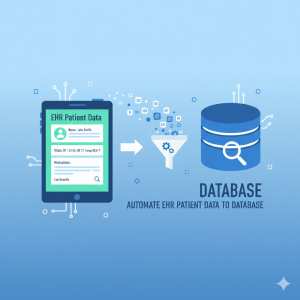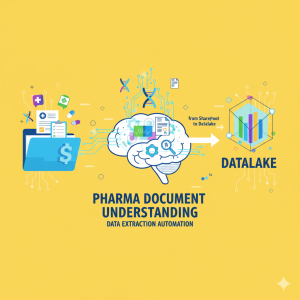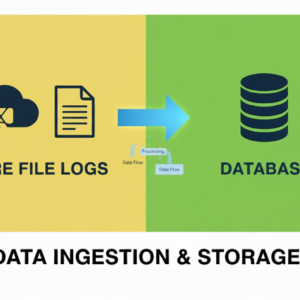Transform Your Shopify Customer Data to Acumatica Integration—No Coding Needed
$0.00
| Workflow Name: |
Shopify Customer Data Sync to Acumatica |
|---|---|
| Purpose: |
Automate customer data transfer from Shopify to Acumatica in real time. |
| Benefit: |
Improves data accuracy, saves manual effort, and enables instant visibility within the ERP system. |
| Who Uses It: |
eCommerce Managers, Finance Teams, IT Admins |
| System Type: |
ERP, eCommerce Platform |
| On-Premise Supported: |
Yes |
| Supported Protocols: |
GraphQL, HTTPS, REST |
| Industry: |
eCommerce, Retail, Wholesale Distribution |
| Outcome: |
90% faster; 100% accuracy |
Table of Contents
Description
| Problem Before: |
Manual syncing caused data errors, delays, and poor visibility across Shopify and Acumatica systems |
|---|---|
| Solution Overview: |
GraphQL automates real-time data sync between NetSuite & Shopify. |
| Key Features: |
Real-time sync; Bi-directional updates; Error handling; Secure API |
| Business Impact: |
70% less manual work., 85% faster updates, 99% accuracy |
| Productivity Gain: |
3x order processing, fewer manual tasks. |
| Cost Savings: |
40% cost reduction, fewer errors. |
| Security & Compliance: |
Auto audit logs, consistent records |
Automate Shopify Customer Data to Acumatica
Streamline the entire Shopify Customer Data to Acumatica process by automating data extraction, validation, and synchronization—directly from your Shopify store. This no-code workflow leverages AI to read, interpret, and map customer profiles, contact details, and account information into Acumatica with high accuracy.
Intelligent Data Mapping & Synchronization
Using AI-powered automation, the system identifies key fields such as Customer Name, Email, Order History, and Account Details from Shopify. It automatically validates, transforms, and syncs the data into Acumatica—ensuring consistency, eliminating manual errors, and maintaining a single source of truth across your CRM and ERP systems.
Watch Demo
| Duration: |
03:26 |
|---|
Outcome & Benefits
| Time Savings: |
70% faster sync, real-time updates |
|---|---|
| Cost Reduction: |
40% less manual effort, lower ops cost |
| Accuracy: |
99.9% accurate, no data mismatches |
| Productivity: |
2x faster processing, higher efficiency |
Industry & Function
| Function: |
Customer & Order Management |
|---|---|
| System Type: |
ERP, eCommerce Platform |
| Industry: |
eCommerce, Retail, Wholesale Distribution |
Functional Details
| Use Case Type: |
Customer Data Synchronization |
|---|---|
| Source Object: |
Customers, Contacts |
| Target Object: |
Customer Accounts |
| Scheduling: |
Real-time / hourly |
| Primary Users: |
E-commerce, CRM, and Finance Teams |
| KPI Improved: |
SLA adherence; DSO reduction |
| AI/ML Step: |
Demand prediction |
| Scalability Tier: |
Enterprise-level |
Technical Details
| Source Type: |
GraphQL API |
|---|---|
| Source Name: |
Shopify |
| API Endpoint URL: |
https://{{shopify-store}}.myshopify.com/admin/api/2025-01/customers.json |
| HTTP Method: |
GET |
| Auth Type: |
OAuth 2.0 |
| Rate Limit: |
2 requests/sec (Shopify standard) |
| Pagination: |
Cursor-based |
| Schema/Objects: |
Customers, Addresses, Orders (for reference) |
| Transformation Ops: |
Field mapping, JSON normalization, data validation |
| Error Handling: |
Retry + Dead-letter queue |
| Orchestration Trigger: |
Event-based (Order Update) |
| Batch Size: |
200 records/run |
| Parallelism: |
5 concurrent threads |
| Target Type: |
REST API |
| Target Name: |
Acumatica ERP |
| Target Method: |
POST / PUT — Create or Update Customer |
| Ack Handling: |
Acumatica response with CustomerID and status |
| Throughput: |
~10K records/hr |
| Latency: |
<5 seconds |
| Logging/Monitoring: |
Central log + error alerts |
Connectivity & Deployment
| On-Premise Supported: |
Yes |
|---|---|
| Supported Protocols: |
GraphQL, HTTPS, REST |
| Cloud Support: |
AWS, Azure, GCP |
| Security & Compliance: |
Auto audit logs, consistent records |
FAQ
1. What is the goal of Shopify Customer Data to Acumatica integration?
The main goal is to eliminate manual data entry by automatically syncing customer records, contact details, and account information from Shopify to Acumatica ERP. This ensures up-to-date and accurate customer data across platforms.
2. How does the integration work?
The integration connects Shopify’s Customer API with Acumatica using secure REST endpoints. Whenever new customers are created or updated in Shopify, the data is automatically validated, transformed, and synced with Acumatica in real time or on a schedule.
3. What kind of customer data is transferred?
Key details such as Customer Name, Email, Phone, Billing & Shipping Address, Order History, and Account Status are synchronized. Custom fields can also be mapped based on business needs.
4. Can the integration handle duplicate or missing data?
Yes. The workflow includes validation and deduplication logic. If a duplicate record or missing field is detected, it is flagged for review before being synced to Acumatica.
5. Is this integration secure?
Absolutely. Data is transferred using HTTPS with OAuth 2.0 authentication. eZintegrations™ ensures full audit trails, role-based access control, and compliance with enterprise-grade security standards.
6. What is the business benefit of automating Shopify to Acumatica?
Automating customer data sync saves time, reduces manual errors, and provides a 360° customer view in Acumatica. It helps teams in sales, finance, and support make faster, data-driven decisions.
Case Study
| Customer Name: |
Global Retailer |
|---|---|
| Problem: |
Manual customer data uploads caused inconsistencies and duplicate records across Shopify and Acumatica. |
| Solution: |
Automated real-time synchronization of Shopify customer data into Acumatica using a no-code workflow. |
| ROI: |
4 FTEs redeployed; 3-month payback period achieved. |
| Industry: |
eCommerce, Retail, Wholesale Distribution |
| Outcome: |
90% faster; 100% accuracy |






